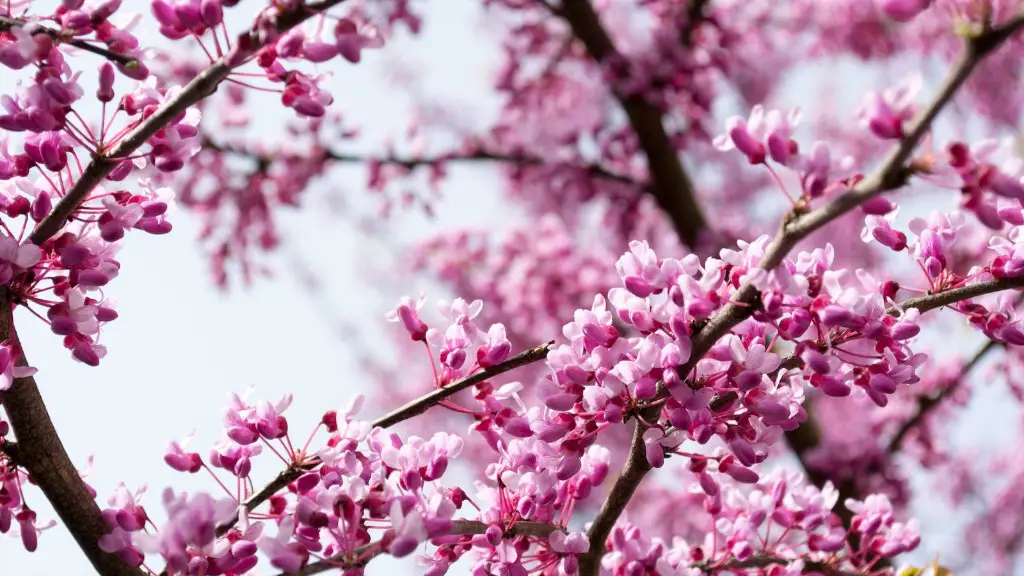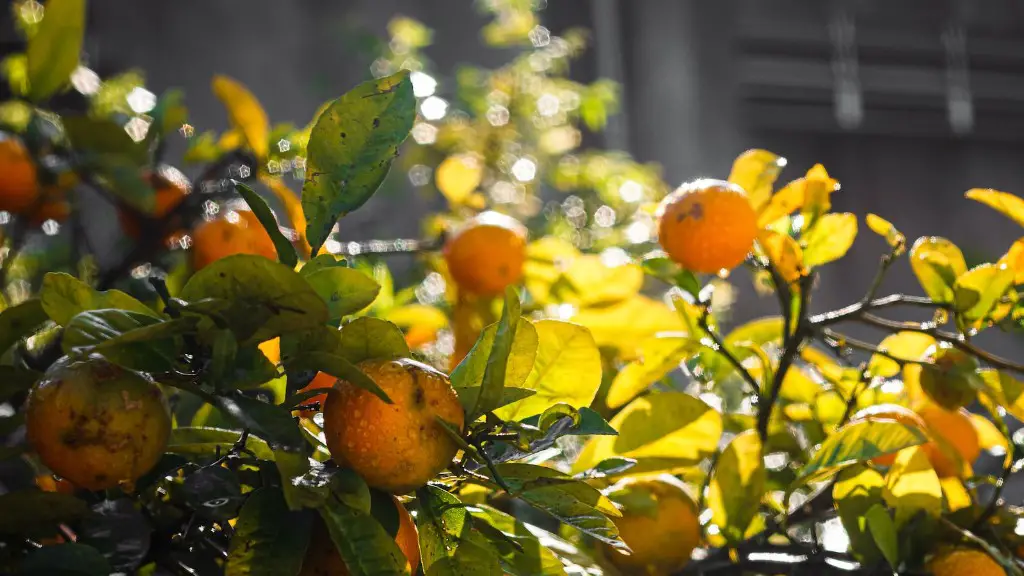Avocados are a delicious, nutrient-packed superfood enjoyed around the world. Growing your own avocados can be a rewarding, cost-effective, and eco-friendly way to enjoy them. There are a few steps people can take to help their avocado trees thrive and produce healthy, delicious fruit.
Watering is the most important part of helping an avocado tree grow. The tree needs deeply and regularly watered during the growing season. The soil needs to be kept consistently moist, but not soggy. Watering should become less frequent in the winter. An avocado tree also needs to be fed, but with a gentle hand. Too much nitrogen can be detrimental to the tree, preventing it from bearing fruit. An integrated approach to fertilizing, using a combination of organic and commercial fertilizers, is the best way to ensure the tree receives the nutrients it needs without overfeeding.
It’s also important to provide an avocado tree with the right environment. They prefer full sunlight, temperatures between sixty-five and eighty-five degrees, and sheltered, rocky soil. If the tree is planted in a pot, use a premium organic soil mix. The tree should also be protected from strong winds, since they can damage the leaves and branches.
Avocado trees are prone to several pests and diseases. Regularly monitoring the tree for infestations and diseases is one of the best ways to help it grow healthy and strong. At the first sign of a pest or disease, it’s important to take steps to get rid of them. This can be done through natural treatments or chemical pesticides, depending on the severity of the infestation. Pruning is also important for avocado trees. Regularly pruning the branches is a great way to keep the tree healthy and strong and to ensure it produces high-quality fruit.
Finally, avocado trees require a lot of TLC to thrive. They need to be monitored and cared for on a regular basis to ensure they are healthy and strong. Regularly checking the soil moisture and fertilizing the tree, as well as pruning and monitoring for pests or diseases, are all key steps people can take to ensure the tree grows healthy and produces delicious fruit.
Protection from the Elements
One of the most important things to consider when growing an avocado tree is protecting it from the elements. When temperatures get too hot, the tree needs protection from direct sunlight. Too much sun can cause sunburn and leaf scorching, which can weaken the tree and make it more susceptible to pests and diseases. On the other hand, if night time temperatures drop below fifty-five degrees, the tree needs to be covered or moved indoors to protect it.
In regions where temperatures drop below freezing, an avocado tree needs to be brought indoors or replanted in a container and moved indoors during the winter months. Additionally, strong winds can damage the leaves and branches, so consider planting the tree near a windbreak like a fence or a wall.
Protecting the tree from the elements is, therefore, an important part of helping it grow healthy and strong. Avocado trees are resilient, but they do require protection from the elements in order to thrive.
Soil Preparation & Planting
Choosing the right soil for your avocado tree is essential for helping it grow healthy. Sandy and clay soils are the best for avocado roots, but adding organic matter like compost can help improve many soils. The soil should be well drained; if it is heavily compacted, it should be loosened with tilling.
When planting, the tree should be planted so that the root flare – the area where the roots emerge from the trunk – is slightly above the soil line. The tree should also be planted in a spot that gets full sun and has plenty of room for the roots to grow and the tree to mature. Planting in a container is an option, but it limits the growth potential of the tree, since the roots will eventually become constricted.
For the best results, it’s best to plant a healthy, mature avocado tree. For gardeners who want to start from a sapling, make sure to choose a sapling that is two to three years old and has been container-grown.
Pest and Disease Control
When growing an avocado tree, it’s important to be aware of the pests and diseases that can affect it. Commonly found pests are aphids, mites, mealybugs, thrips, and scale insects. There are a variety of chemical pesticides available to help control them, but these can be harsh on the environment, so it’s best to try natural treatments first.
Common diseases affecting avocado trees include root rot, stem canker, and black spot. These can be particularly damaging to the tree and can eventually lead to its death. Regularly monitoring the tree for signs of disease is important. At the first sign of a disease, it’s best to take action and provide treatment.
Following organic gardening practices whenever possible is the best way to control pests and disease. This includes using organic fertilizers, mulching the soil, and avoiding overwatering.
Pollination & Fruit Production
For an avocado tree to produce fruit, it needs to be properly pollinated. Avocado trees are monoecious, which means they have both male and female flowers on the same tree. To ensure proper pollination and fruit production, it’s important to ensure there are both male and female trees nearby.
It’s also important to understand the flower cycle of an avocado tree. The flowers open for a few hours in early morning and are pollinated by natural pollinators like bees, moths, and butterflies. If there are not enough pollinators, it’s possible to hand-pollinate the flowers.
Assuming proper pollination and adequate care, an avocado tree can start producing fruit in three to five years. On average, a tree can produce between fifteen to twenty pounds of fruit per year.
Harvesting & Storing the Fruit
Harvesting an avocado is a special process that requires the right timing and a delicate touch. The fruit should be left on the tree until it reaches it’s full maturity, which can take several months. This is the best way to ensure the fruit is sweet and flavorful. Once it’s ready, it can be harvested from the tree using pruners.
Once the fruit is harvested, it should be stored in a cool, dry area. Avocados can be stored at room temperature, but they should be used within a few days. Unripe avocados can be stored in a paper bag or on a plate with an apple or banana to speed up the ripening process. Once the fruit is ripe, it can be stored in the refrigerator for up to two weeks.
Maintenance & Care
Regular maintenance and care are essential components of helping an avocado tree thrive. Pruning is important to improve the tree’s overall health, encourage flowering, and ensure it produces healthy, high-quality fruit. It’s important to regularly monitor the tree for pests and diseases, as well. At the first sign of an infestation, it’s best to take action and provide treatment.
It’s also important to ensure the tree has adequate access to sunlight, water, and nutrients. Regular applications of organic matter, like compost, is a great way to ensure the tree has access to the nutrients it needs to thrive. Monitoring soil moisture is also important; make sure the soil is evenly moist without becoming soggy.
Finally, make sure to provide adequate shelter for the tree, especially during winter months. An avocado tree should be protected from strong winds and temperatures that drop below fifty-five degrees Fahrenheit. If the tree is planted in a container, it should be moved indoors during the winter months.
The Benefits of Growing an Avocado Tree
Avocados are a delicious, nutritious superfood that can be enjoyed around the world. Growing your own avocado tree can be a rewarding, cost-effective, and eco-friendly way to enjoy them. With a bit of TLC and knowledge, anyone can help an avocado tree grow and produce healthy, delicious fruit.
Not only does growing an avocado tree provide you with a supply of delicious avocados, it’s also an environmentally responsible choice. Avocado trees are naturally drought-tolerant and require minimal care, making them a great choice for people looking to conserve water and reduce their carbon footprint.
The benefits of growing your own avocado tree go beyond the environmental ones. Harvesting your own avocados can be a fun and rewarding experience, and it also ensures that you have access to fresh, organic avocados whenever you want. With a bit of knowledge and effort, anyone can make the most of their avocado tree and enjoy delicious, nutritious avocados whenever they want.



